Understanding Rainmeter: A Brief Overview
- What is Rainmeter and how does it work?
- Exploring the benefits of Rainmeter customization.
- Availability for both Windows and macOS platforms.
- What is Rainmeter and how does it work?
- Exploring the benefits of Rainmeter customization.
- Availability for both Windows and macOS platforms.
The Skins tab
There are four main areas in this tab.
The skins list
List of currently installed skins. This contains all Skins found when Rainmeter is started or refreshed.
The list consists of the config folder for each skin, and the skin .ini files for each config.
The list is updated when Rainmeter is refreshed.
Create new skin
The "Create new skin" button open a dialog where you can easily add new skin folders and skin .ini files to Rainmeter.
New skin .ini files added will use a default or custom template as desired.
New items will be added to Rainmeter, and a full refresh of the application and all skins will take place. Your new folders and skins will appear in the Skins panel of Manage and are ready to be edited or loaded.
See New Skin for details.
Active skins
This pull-down will contain a list of all currently loaded and active skins in Rainmeter.
Clicking on a skin will make that skin active in the Manage tab.
Metadata
Displays the information in the [Metadata] section of the selected skin.
This includes Name, Config, Author, Version, License and Information fields.
If a skin does not contain a [Metadata] section, the Add metadata link in this area will add an empty section with all fields.
Skin Settings
For a selected active skin, shows the current values of various settings. Changes will immediately effect the skin on the desktop.
- Coordinates: The window X and Y location of the skin on the screen in pixels.
- Position: The z-position of the skin on the desktop relative to other windows.
- Load order: The loading order of the skin on the desktop relative to other skins.
- Transparency: The transparency of the skin.
- On hover: The on hover behavior of the skin.
- Draggable: The draggable setting for the skin.
- Click through: The click through setting for the skin.
- Keep on screen: The keep on screen setting for the skin.
- Save position: The save position setting for the skin.
- Snap to edges: The snap to edges setting for the skin.
- Favorite: Adds or removes the current skin in a list of Favorites accessed with the Rainmeter context menu.
- Display monitor: Settings for the monitor on which the skin is displayed.
Use default: Primary monitor: Removes the@Ndirective from WindowX/WindowY settings.
@0, @1, @2, ... , @32: Adds the specified monitor number to WindowX/WindowY settings.@0represents "The Virtual Screen".
Auto-select based on window position: If checked, the WindowX/WindowY@Nsettings are made automatically based on the position of the meter's window. This setting will be unchecked when a specific monitor is selected.
Buttons used to control skins:
- Unload / Load: Unload (make inactive) the selected skin if it is currently active, or load it if not.
- Refresh: Refresh the selected active skin.
- Edit: Edit the selected skin with the text editor associated with .ini files.
The Layouts tab
Layouts in Rainmeter are a way to save and load the current state of the Rainmeter settings. This saves the positions of currently active and inactive skins, as well as all other settings stored in the current Rainmeter.ini file. The layout can then be loaded to restore any saved state. Layouts are saved in the Rainmeter settings folder.
Note: The skin folders and files themselves are not saved with a layout.
There are two main areas in this tab.
Save new layout
Note: If an existing layout is selected from the Saved layouts list or typed in, saving will replace the existing saved layout with the current state.
Saved layouts
Global options under [Rainmeter] are not replaced when a layout is loaded, preserving local settings such as:
- ConfigEditor
- SkinPath
- DisableVersionCheck
- Language
When loading a layout, the current Rainmeter state will automatically be saved as a layout named @Backup.
Hint: A layout can be loaded from the Windows command line using the !LoadLayout bang.
"C:\Program Files\Rainmeter\Rainmeter.exe" !LoadLayout "My Saved Layout"
The current Rainmeter state will be replaced with the named layout. If Rainmeter is not running, it will be started.
The Game mode tab
Game mode is used to unload some or all skins when running a full-screen game, in order to save Rainmeter CPU and GPU resources while playing.
This can be configured to be automatically triggered by checking the Full-screen games box, which will automatically enter Game mode when any full-screen D3D game is active on the primary monitor.
In addition, one or more processes of your choice that are not full-screen D3D games can be entered one process per line in the Additional process list text box, and when any of those processes are running, game mode will be triggered.
On start
What happens when Game mode starts is controlled by the On start pulldown. This can be set to the default Unload all skins or any defined Layout that you create.
On stop
What happens when Game mode stops is controlled by the On stop pulldown. This can be set to the default Load current layout, which will load the skins that were running before Game mode was triggered, or any defined Layout that you create.
Simply create the Layouts you want to use for Game mode start and stop, and select them from these pulldowns.
Game mode can also be started and stopped manually, as well as fully configured, from the Rainmeter tray icon context menu.
Note that if you manually start or stop Game mode, the checkboxes for automatic triggering will be turned off, and you will need to enable them again, either from the context menu, or from Manage.
The Settings tab
This tab has some high level settings for the Rainmeter application, as well as controls for Rainmeter's logging capability.
General
- Language:
Use the pull-down menu to select the desired language for all Rainmeter user interfaces. This does not have any effect on languages used in skins. - Editor:
Enter or browse to the text editor that will be used when "Edit skin" or "Edit settings" is selected. - Check for updates
When started, Rainmeter will check for a newer version. A notification will be raised to alert the user to the new version, and clicking on the notification will take the user to https://www.rainmeter.net in the default browser, where the new version can be manually downloaded and installed if desired. - Automatically install updates
If both this checkbox and "Check for updates" are enabled, Rainmeter will automatically download and install any new version of the software it finds when started. If "Check for updates" is not checked, this setting is disabled and ignored. - Disable dragging
If selected, automatically sets the draggable state of all active skins to prevent dragging skins with the mouse. - Show notification area icon
Shows or hides the Rainmeter icon in the Windows notification area (system tray).
Note: If all skins are unloaded, the notification area icon will appear, regardless of this setting, in order to avoid a situation where you can't interact with Rainmeter at all. - Use hardware acceleration
Turns on or off the use of the GPU to accelerate drawing, and offload some processing and memory from the CPU to the GPU. This requires that Rainmeter be restarted to change. - Reset statistics
When clicked, clears all saved network and other statistics from the Rainmeter.stat file in the settings folder.
Unleashing your Creativity: Rainmeter Skins and Customization
- Discovering the vast library of Rainmeter skins available.
- How to download and install skins on Windows and macOS.
- Customizing skins to match your style and preference.
I. Exploring Rainmeter Skin Libraries:
Rainmeter has a vast library of skins available online. Start by visiting rainmeter.net and navigating to their "Skins" section. Other popular websites where you can find Rainmeter skins include DeviantArt and Reddit. These platforms have dedicated sections for Rainmeter where you can browse and download various skins.II. Downloading and installing Rainmeter skins on Windows:
Once you find a skin you like, download the skin file (typically with a .rmskin extension). Double-click the downloaded .rmskin file, and Rainmeter will automatically install the skin. After installation, the skin will appear in your Rainmeter manager, where you can enable/disable, customize, and position it on your desktop.III. Downloading and installing Rainmeter skins on macOS:
While Rainmeter is primarily developed for Windows, there is a modified version called "Übersicht" that allows some Rainmeter skins to work on macOS. Visit the Übersicht website (tracesof.net/uebersicht) and download the application. Once installed, open Übersicht and click "Open Widgets Folder" from the dropdown menu in the menubar. Download a Rainmeter skin and extract the files. Move the extracted folder into the Übersicht widgets folder. Back in Übersicht, you can now activate the skin by selecting it from the dropdown menu in the menubar.IV. Customizing Rainmeter skins:
Rainmeter skins are highly customizable and can be tweaked to match your style and preference. Right-click on the Rainmeter icon in the system tray (Windows) or the Übersicht widget in the menubar (macOS) and select "Manage". From the Rainmeter manager, you can access the settings for each skin. Here, you can modify things like colors, fonts, sizing, and functionality. Some skins also allow for additional customization through the skin code itself. Open the .ini file associated with the skin in a text editor and make desired changes (if you have some coding knowledge). By following these steps, you can easily discover, download, install, and customize Rainmeter skins to create a personalized desktop setup on both Windows and macOS.Y10 RAINMETER SKIN PREVIEW | DOWNLOAD
RSS LINK:
VIDEO :
DOWNLOAD:
If you like this article, please share it using the buttons below. It won't take a lot from you, but it will help us grow. Thanks for your support!
RAINMETER OMNIMO V10 SKIN OFFICIAL SKIN HONEY SKIN


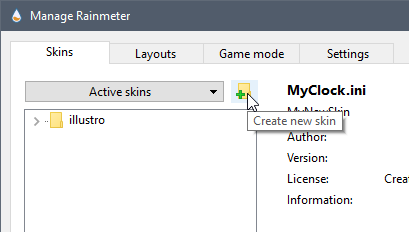

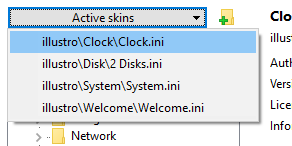







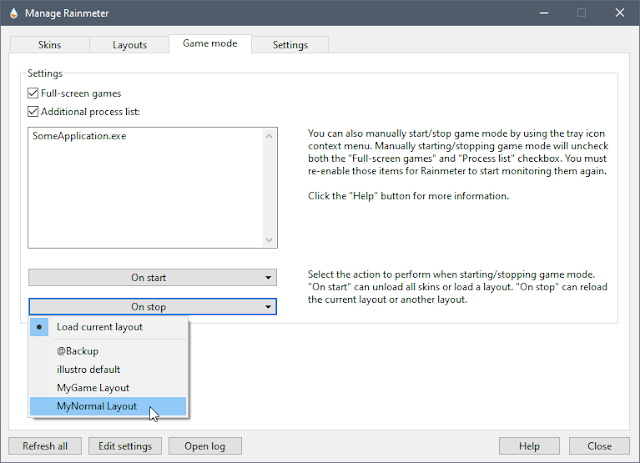



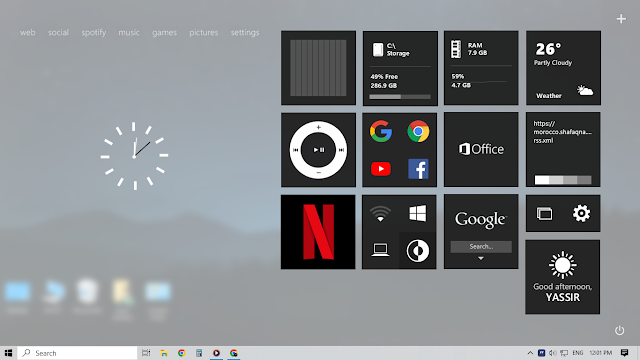
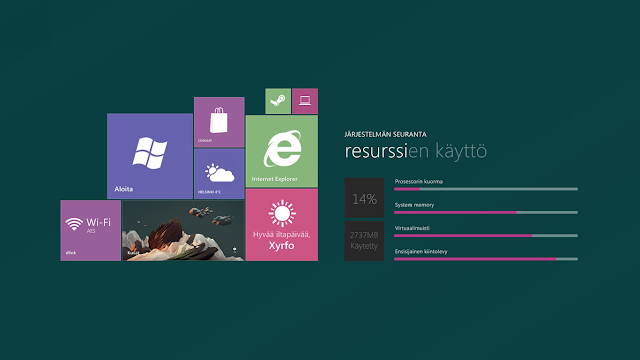



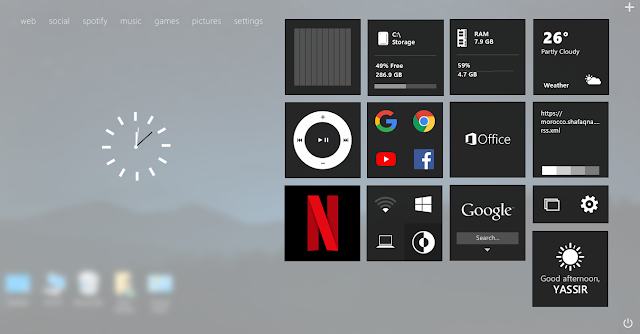
%20(1000%C2%A0%C3%97%C2%A0800%C2%A0px).jpg)


![Adobe Photoshop CC 2020 21.0.0.37 Windows + macOS [Full Version]](https://blogger.googleusercontent.com/img/b/R29vZ2xl/AVvXsEiDQ5AKBvnXu-YZLVekTEr-zvs2ndl33nWq-5Lw-nwhhnDTvyQDbzKD8JKUiywn1XKZrI-4D7Uj0EBPstLmqYEyot2IzrScWnUpKh54ThNdJ5Lda7F2GAjes5rOKxOvYMLajQWXHVNQulAr/w72-h72-p-k-no-nu/Photoshop.jpg)
0 Comments